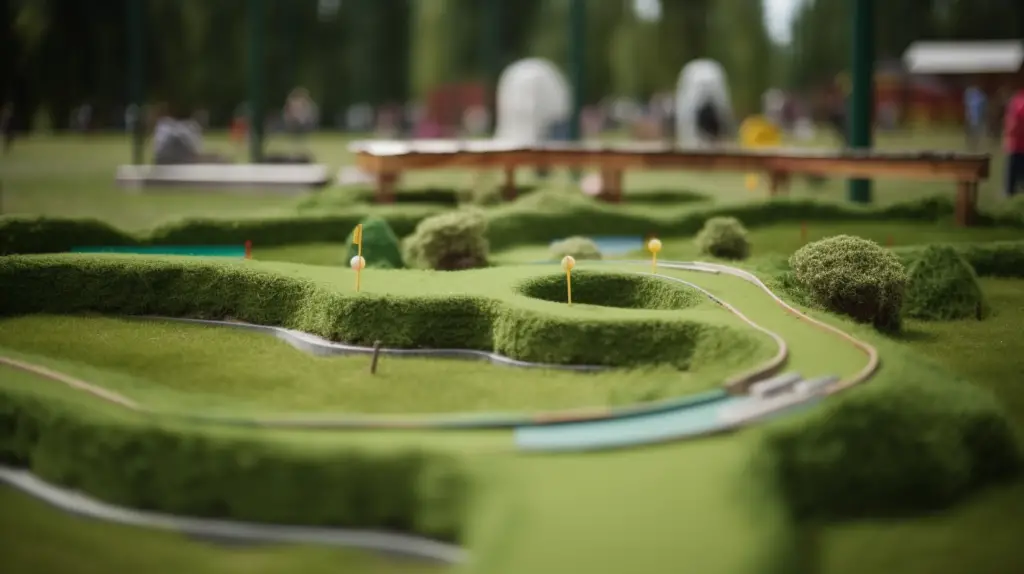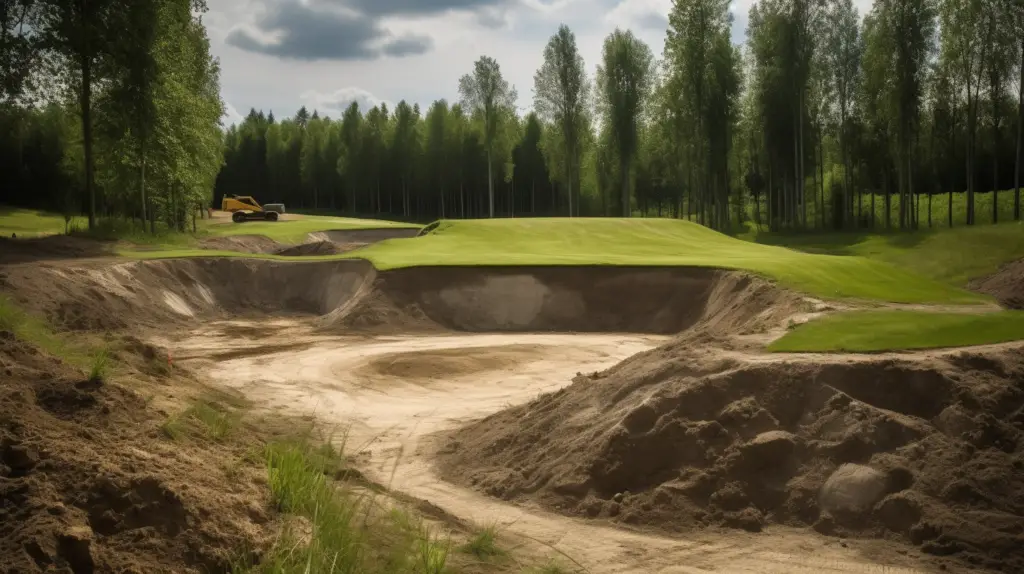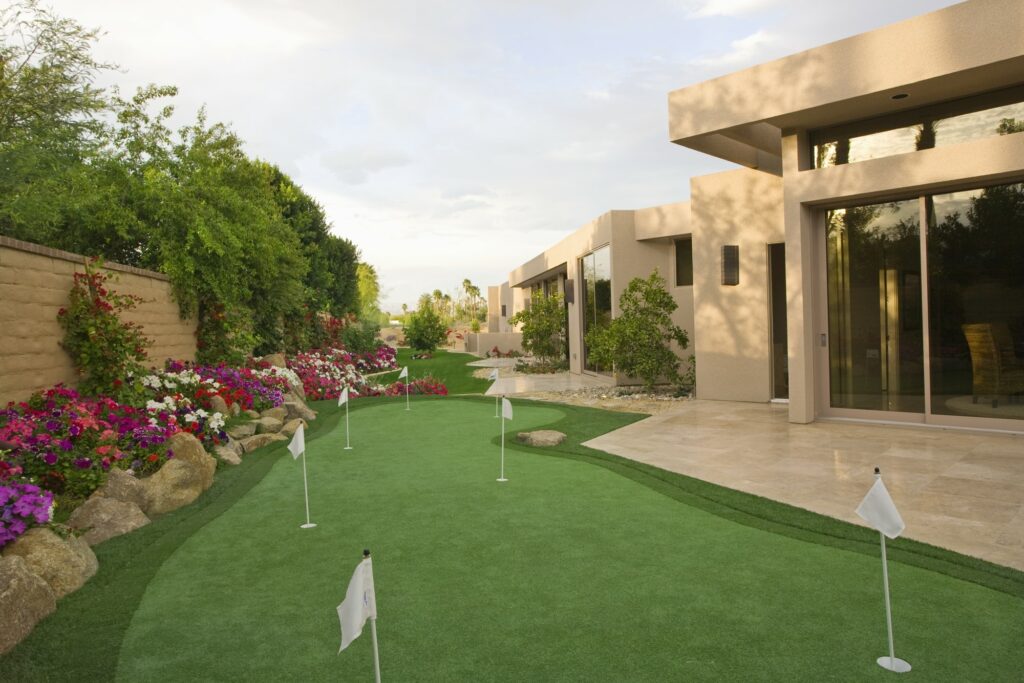Last Updated on October 27, 2023
Are you in search of an original method to amuse your family and friends? Building your own crazy golf course is the perfect solution. For an entertaining experience that will be remembered for years to come, craft a mini-golf course in your outdoor space or on vacant land. With our comprehensive guide, you’ll have all the information needed to construct your own mini-golf course and make it a fun experience. We’ll show you how to choose the right location, design an interesting layout, construct the obstacles and maintain it over time – all while having some laughs along the way. So grab your putters, and let’s get building that crazy golf course.
Table of Contents:
Choosing a Location
When selecting a venue for your crazy golf course, take into account accessibility and size to ensure it is suitable for all players. Reaching the course should be straightforward and effortless for all potential visitors. The dimensions of the course should be taken into account; it shouldn’t consume an excessive amount of space yet have enough area to accommodate players with varying levels of ability. Additionally, make sure that there are amenities nearby, such as restrooms and food options if desired.
Designing the Course

Constructing a golf course is an intricate process, necessitating meticulous planning and scrupulous consideration of particulars. When it comes to layout and obstacles, the possibilities are endless. Think of creative ways to challenge players while still keeping the game enjoyable. Use natural elements like water hazards, sand traps, and trees, as well as man-made features such as bunkers or bridges for added interest. If you’re feeling extra ambitious, consider adding elevation changes or multiple tee boxes for different levels of difficulty.
To really make your course stand out from the rest, incorporate unique themes and decorations throughout the grounds. Choose vibrant colours that will pop against the green landscape; add sculptures or other interesting objects; create whimsical pathways with stepping stones; hang flags on each hole for added flair – whatever suits your vision. You can also use themed signs at each hole to explain rules or give helpful tips about how best to approach a shot.
Safety should always be a top priority when designing any golf course. Make sure all regulations are followed regarding hazard placement and construction materials used in building structures, such as cart paths or tees boxes. Additionally, pay close attention to slope ratings so that everyone has access regardless of physical ability level; this is especially important if you plan on hosting tournaments at some point down the line. With these considerations taken into account during the design phase, you will have a beautiful yet safe golf experience for all who visit your course.
Building the Course

When building a golf course, there are several essential materials needed for construction. These include turf grass seed or sod, soil amendments such as compost or sand, irrigation equipment like sprinklers or hoses, drainage systems such as pipes or trenches, and landscaping fabric and gravel to prevent erosion and runoff into water sources nearby. In addition, you’ll need to have certain implements like spades, rakes and barrows on hand for shifting the material around.
You’ll need to assemble a few specialised tools for optimal results when constructing the golf course, such as an aerator to reduce soil compaction, top dressing rake for spreading organic matter, overseeded for even grass seed distribution, edger for trimming paths between tee boxes and fairways, sod cutter to remove existing turf without disturbing underlying layers of soil, power trencher to quickly dig trenches with minimal effort, mower specifically designed for cutting turfgrass at different heights depending on desired look/feel/playability etc., fertiliser spreader which ensures uniform application of chemical fertilisers across the entire area being treated. Furthermore, you will require shovels, rakes and wheelbarrows in order to move materials around on site along with other items like line markers (for marking boundaries) etc.
Maintaining the Course
Maintaining the grounds by regularly removing debris and mowing grass, as well as fertilising turfgrass to promote healthy growth, are essential components of golf course maintenance. This includes removing debris such as leaves, sticks, and stones from fairways and greens, as well as mowing the grass regularly to keep it at an even height throughout the entire course. It’s also important to fertilise turfgrass regularly so that it stays healthy and lush for optimal playability.
Repairing worn or storm-affected patches is essential in order to prevent further issues, such as flooding or erosion, that could render certain parts of the course unplayable. If left unchecked, this damage can lead to bigger problems down the line, such as flooding or erosion issues which could make certain areas unplayable or dangerous for players. To avoid this, damaged areas should be repaired immediately with quality materials like sand or soil mix, depending on what type of terrain needs fixing up.
Poor drainage can cause a range of issues on a golf course, such as standing water in low-lying areas, which could create mud pits that are difficult for players to navigate around during their game. To prevent these types of problems from occurring, it is essential to install proper drainage systems throughout the entire length of the course so that excess water can easily flow away without causing any disruption during playtime sessions.
Conclusion
The pleasure of crafting a wacky mini-golf course is that you can be as innovative and fanciful as desired. With the right location, design, construction materials and maintenance plan in place, your dream course could become a reality. Building a crazy golf course requires dedication and hard work, but the end result will bring hours of entertainment for friends and family alike – it’s worth every bit of effort to build a crazy golf course.


